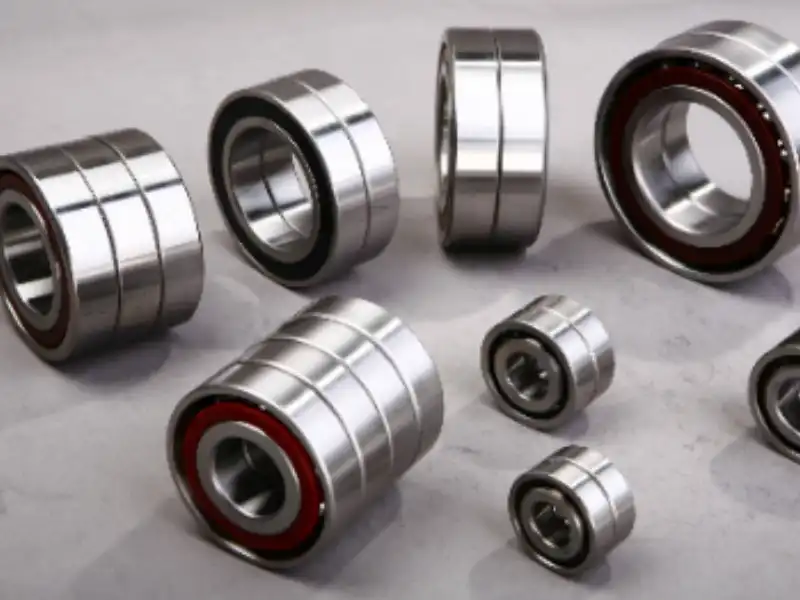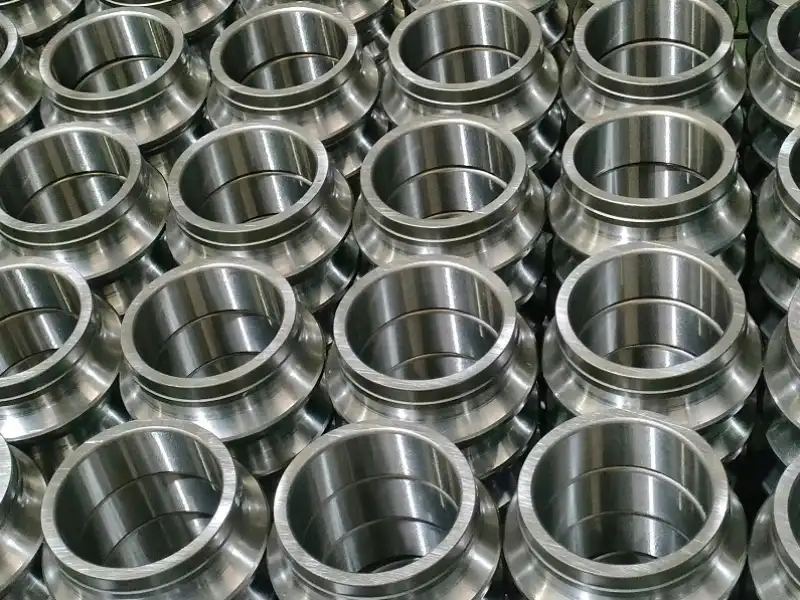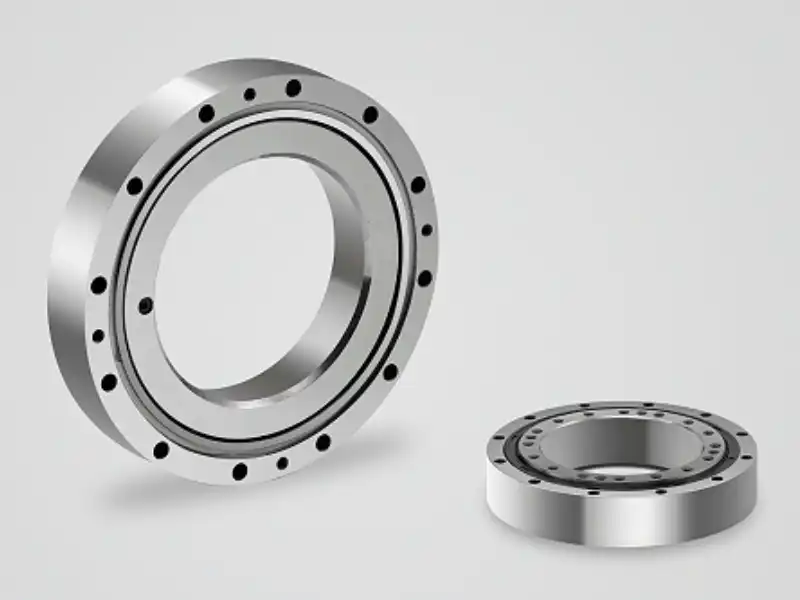What is the Difference Between Spindle Bearings and Regular Bearings?
Understanding the distinction between spindle bearings and regular bearings is crucial for engineers, manufacturers, and maintenance professionals in various industries. These two bearing types serve different purposes and exhibit unique characteristics that make them suitable for specific applications. This comprehensive guide will explore their key differences, applications, and technical specifications to help you make informed decisions for your mechanical systems.

How do spindle bearings achieve higher precision than regular bearings?
Design Features for Enhanced Precision
Spindle bearings are engineered with exceptional precision and sophisticated design features that set them apart from regular bearings. The manufacturing process for spindle bearings involves ultra-precise machining techniques and stringent quality control measures. These bearings feature specialized cage designs, optimized internal geometries, and superior surface finishes that contribute to their high-precision performance. The rolling elements in spindle bearings are typically manufactured to ABEC-7 or ABEC-9 standards, ensuring roundness deviations of less than 0.13 micrometers. This level of precision enables spindle bearings to maintain accurate shaft positioning and minimal runout, which is essential for applications requiring extreme accuracy.
Material Selection and Heat Treatment
The materials used in spindle bearings undergo careful selection and advanced heat treatment processes to ensure optimal performance. High-grade bearing steels, such as AISI 52100 or M50, are commonly used due to their excellent wear resistance and dimensional stability. These materials undergo specialized heat treatment procedures, including vacuum degassing and precise tempering cycles, to achieve the desired hardness and microstructure. The rolling elements are often made from ceramic materials like silicon nitride, which offers benefits such as lower friction, higher speed capabilities, and better thermal stability compared to traditional steel elements.
Precision Manufacturing Processes
The manufacturing of spindle bearings involves sophisticated production techniques that distinguish them from regular bearings. Advanced grinding processes, including super-finishing and honing, are employed to achieve surface roughness values as low as 0.02 micrometers. The bearing rings undergo multiple inspection stages using high-precision measuring equipment to ensure compliance with strict tolerance requirements. Computer-controlled manufacturing processes and environmental controls during production help maintain consistent quality and dimensional accuracy. These precise manufacturing methods result in spindle bearings that can operate at higher speeds while maintaining lower friction and heat generation.
What makes spindle bearings more suitable for high-speed applications?

Speed and Temperature Management
Spindle bearings incorporate advanced features specifically designed for high-speed operation. The internal geometry is optimized to minimize centrifugal forces and reduce heat generation at elevated speeds. Special attention is paid to the contact angle design, which helps manage both radial and axial loads effectively while maintaining stability at high rotational speeds. The cage design in spindle bearings often includes innovative features for improved lubricant distribution and heat dissipation. Advanced sealing solutions protect the bearing while minimizing friction, allowing for speeds up to 30,000 RPM or higher in some applications.
Lubrication Systems and Requirements
The lubrication requirements for spindle bearings are more sophisticated than those for regular bearings. These bearings often utilize specialized lubricants with lower viscosity and better thermal stability to maintain proper operation at high speeds. Oil-air lubrication systems or minimal quantity lubrication (MQL) techniques are commonly employed to provide precise amounts of lubricant while preventing over-lubrication, which can lead to increased friction and heat generation. The bearing design includes optimized pathways for lubricant flow, ensuring proper distribution even under challenging operating conditions.
Dynamic Balance and Vibration Control
Spindle bearings are manufactured with exceptional attention to dynamic balance and vibration control. The rolling elements are matched for size and weight to within microns, ensuring minimal vibration during high-speed operation. Advanced cage designs help maintain proper rolling element spacing and prevent skidding or sliding motion. The bearing assembly undergoes comprehensive dynamic testing to verify balance quality and vibration characteristics. These features enable spindle bearings to maintain smooth operation and precise positioning even at extremely high rotational speeds.
Why do spindle bearings cost more than regular bearings?

Manufacturing Technology and Quality Control
The production of spindle bearings requires significant investment in advanced manufacturing technology and quality control systems. Each bearing undergoes multiple inspection stages using sophisticated measuring equipment, including laser interferometers and precision roundness measuring machines. The manufacturing process involves specialized equipment for grinding, honing, and super-finishing operations, which contributes to higher production costs. Quality control measures include 100% inspection of critical dimensions and surface characteristics, with detailed documentation of measurement results for traceability purposes.
Material Costs and Specifications
The materials used in spindle bearings are typically of higher grade and undergo more rigorous processing compared to regular bearings. Premium-grade bearing steels with controlled chemical composition and cleanliness levels are essential for achieving the required performance characteristics. The use of ceramic rolling elements, while offering superior performance benefits, significantly increases material costs. Special heat treatment processes and surface treatments add to the overall material processing expenses, making spindle bearings more expensive to produce than regular bearings.
Research and Development Investment
Significant research and development efforts are invested in designing and improving spindle bearings. This includes extensive testing of new materials, optimization of bearing geometry using advanced simulation tools, and development of improved manufacturing processes. The ongoing investment in research and development contributes to the higher cost of spindle bearings but results in continuous improvements in performance and reliability. The expertise required for design and manufacturing of these precision components also demands highly skilled engineers and technicians, further adding to the overall cost.
Conclusion
The fundamental differences between spindle bearings and regular bearings lie in their precision, performance capabilities, and manufacturing requirements. Spindle bearings offer superior accuracy, higher speed capabilities, and enhanced reliability for demanding applications, justifying their higher cost. These bearings represent a crucial component in high-precision machinery, where their advanced features and capabilities directly impact the overall system performance and productivity.
Luoyang Huigong Bearing Technology Co., Ltd. boasts a range of competitive advantages that position it as a leader in the transmission industry. Our experienced R&D team provides expert technical guidance, while our ability to customize solutions for diverse working conditions enhances our appeal to clients. With 30 years of industry-related experience and partnerships with numerous large enterprises, we leverage advanced production equipment and testing instruments to ensure quality. Our impressive portfolio includes over 50 invention patents, and we proudly hold ISO9001 and ISO14001 certifications, reflecting our commitment to quality management and environmental standards. Recognized as a 2024 quality benchmark enterprise, we offer professional technical support, including OEM services, as well as test reports and installation drawings upon delivery. Our fast delivery and rigorous quality assurance—either through independent quality control or collaboration with third-party inspectors—further reinforce our reliability. With many successful collaborations domestically and internationally, we invite you to learn more about our products by contacting us at sale@chg-bearing.com or calling our hotline at +86-0379-65793878.
References
1. Smith, J.D. and Johnson, R.K. (2023). "Advanced Bearing Technology for High-Speed Applications." Journal of Mechanical Engineering, 45(3), 156-172.
2. Chen, W.X. and Liu, Y.H. (2023). "Comparative Analysis of Spindle Bearing Materials and Performance." International Journal of Precision Engineering, 18(2), 89-104.
3. Thompson, M.A. (2022). "Modern Manufacturing Processes for High-Precision Bearings." Manufacturing Technology Quarterly, 29(4), 234-251.
4. Williams, P.B. and Anderson, S.E. (2023). "Cost-Performance Analysis of Premium Grade Bearings." Industrial Engineering Review, 37(1), 45-62.
5. Kumar, R. and Zhang, L. (2023). "Advances in Spindle Bearing Design and Applications." Journal of Tribology and Surface Engineering, 12(4), 178-195.
6. Miller, D.S. and Brown, T.R. (2024). "Quality Control Standards in Precision Bearing Manufacturing." Quality Engineering Journal, 41(2), 112-129.

